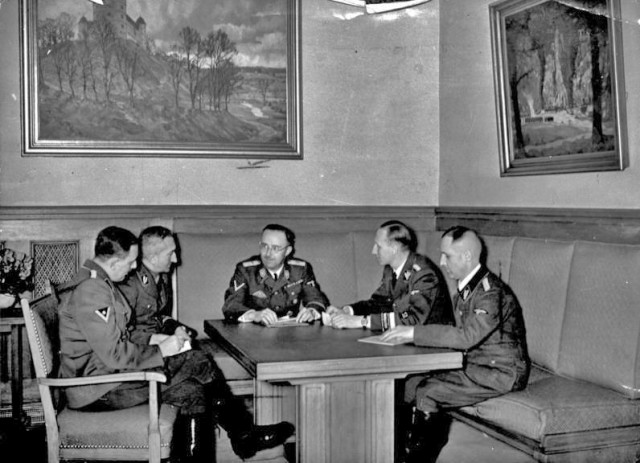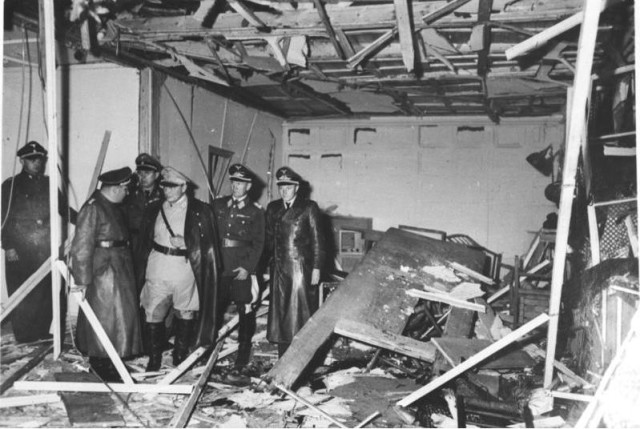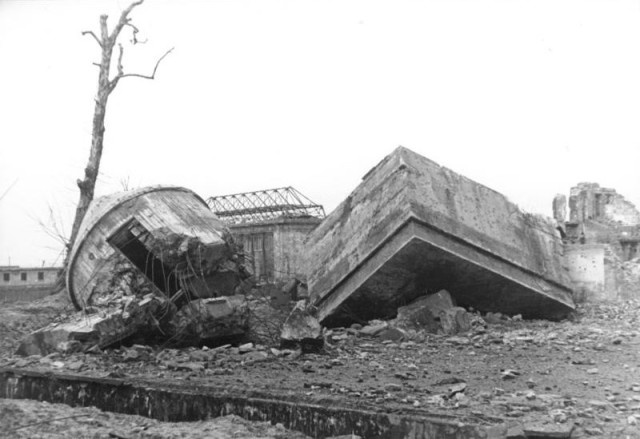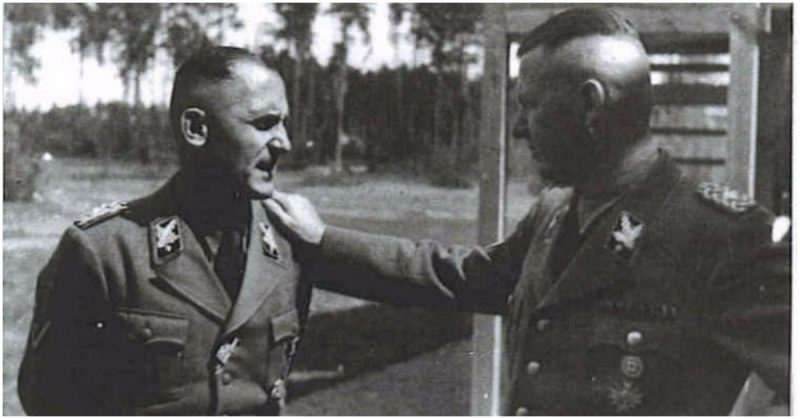A veil of mystery follows the name “Heinrich Muller” since his disappearance in 1945, after the fall of Berlin. Mueller was the head of Gestapo secret police, from 1939, when it officially became the Department IV of the Reichs Main Security Office, or the RSHA, under the command of Reinhard Heydrich. Heinrich Mueller was one of the most important officers of the Third Reich that were never caught, nor was his death ever confirmed officially.
He was directly involved in the planning and execution of the Holocaust, as a senior officer and a trusted colleague of Adolf Hitler, Heinrich Himmler, and Adolf Eichmann. Mueller was one of the key figures of the Wannsee Conference in 1942 when the strategy for the “Final Solution” was officially adopted. The German secret political police became infamous under his leadership and its methods of ruthless torture are a textbook example of a police-state dictatorship.
He was called “Gestapo Muller” for practical reasons since there already was another General Heinrich Mueller in the Wehrmacht. His story starts after WWI. During the war, he was a pilot of a spotter plane that was used to navigate the artillery. He survived the war as a hero and was awarded several prestigious German Army medals. After the war, in 1919, he started working for the Bavarian police department, then part of the Weimar Republic.
It was a period of constant social unrest, as the economic situation in the countries that were defeated during the Great War was unstable, the unemployment rate grew higher and communist and anarchist ideas from the newly formed Soviet Union were finding themselves a fertile ground.
In 1919, Bavaria established itself as the Independent Soviet Republic of Bavaria under the leadership of the Independent Social Democratic Party of Germany. The Free State of Bavaria sought to declare independence from the Weimar Republic, but it was crushed soon after the revolution by the joint forces of the Army, Police and paramilitary forces called Freicorps. Heinrich Mueller, who was a police officer during the insurrection witnessed a shooting of hostages held by the Revolutionary Red Army of the Soviet Republic of Bavaria.
This event confirmed his resentment of the Communists. In 1923, during the putsch, Mueller advocated the use of harsh force against the Nazis and the immediate reaction against the rebellion.

After the Nazi seizure of power, Heydrich congratulated Mueller for his professionalism as a policeman and allowed him to keep his job and work for the Nazis. This made Mueller highly dependent on Heydrich, since he had more than enough reason to execute Mueller as a traitor, but decided to use him instead.
As many sources confirm, Mueller had a fanatical approach to his job, performing tasks with absolute dedication and most importantly, never doubting the nature of the order. By 1935 he was responsible for the complete annihilation of Hitler’s political adversaries, most of them being Communists and Social Democrats. Adolf Eichmann was his direct subordinate, who was in charge of the resettlement of the Jews prior to the war. His superior was his patron, Reinhard Heydrich, later named the Butcher of Prague.
During the war, Mueller was involved in a series of espionage and counter-espionage assignments. He successfully infiltrated the Soviet spy network in Germany called “The Red Orchestra” and used it to distribute false information to the Soviet Intelligence Service.
In 1942, after the assassination of Heydrich in Prague, Mueller was the head of the investigation. He managed, through bribery and torture, to identify the Czech commandos sent by the British to execute Heydrich, but their capture was unsuccessful since they decided to kill themselves rather than to fall into the hands of the Gestapo.
After the death of his original superior officer and patron, Mueller’s influence began to decline gradually. Nevertheless, he was still in charge of the investigation of the Abwehr, the Wehrmacht Intelligence Service, especially of their involvement with the June 20, 1944, assassination attempt on Adolf Hitler himself. This event became known as Operation Valkyrie. The investigation resulted in the arrest of more than 5,000 people and 200 executions.

In the last months of the war, he was still convinced of the ultimate victory of the Reich and remained one of the most dedicated Nazi loyalists. After Heinrich Himmler had attempted to begin peace negotiations with the Allies, behind Hitler’s back, Mueller was responsible for finding him. Himmler was found, based on information from the brutal torture during interrogation of Himmler’s liaison officer, Hermann Fegelein, after which he was shot.
This event took place in April 28, 1945. On April 30, Hitler committed suicide. Mueller was seen on that day, still in his uniform, working on the ongoing investigation on Himmler in the offices of the Fuhrerbunker.

On May 2, Berlin surrendered to the Soviets.
One day earlier it is said that Mueller expressed that he had no intentions of being captured by the Russians. Did he commit suicide, or managed to escape to South America? Or did he change his mind and offered his services to the new boss, the Russians, since he was famous for his unquestionable professionalism?
Immediately after the war Mueller was wanted by the secret services of both the Soviets and the Allies. In 1947, the interest in bringing Mueller and other Nazis that were suspected of having escaped declined due to the beginning of the Cold War, but interest reappeared when rumors started circulating that he was seen in the Soviet interrogation rooms. After the capture of Adolf Eichmann in the 1960 rumors were additionally fueled by the Eichmann’s statement that he believed that Mueller was still alive.
The Eastern Block accused the West of hiding Mueller and there was even a theory that he was seen in Panama in 1967. A man called Francis Willard Keith was accused of actually being Mueller. The Government of West Germany demanded Panama to extradite him, when Mueller’s wife, Sophie claimed that Keith was her husband. After a fingerprint check, Keith was dismissed of these accusations since it was proved that he wasn’t Mueller.
The most probable theory came to public attention in 2013 after Johannes Tuchel, the head of the Memorial to German Resistance made a claim that Mueller’s body was indeed found in August of 1945, buried in a mass grave that held more than 3,000 bodies, which was, ironically, dug up near a Jewish cemetery in Berlin, that was destroyed by the SS in 1943. Tuchel stated that a corpse was discovered “…wearing a general’s uniform. On the inside, his (Mueller’s) service ID with a photo was in the left breast pocket, among other things.”
This theory has never been officially confirmed.
